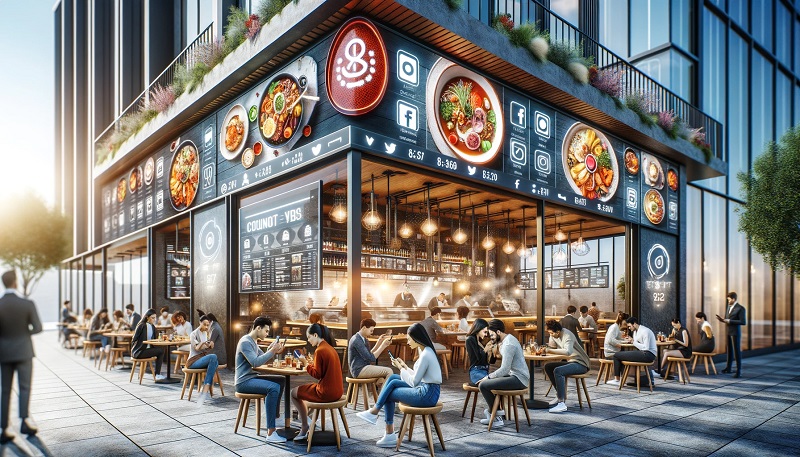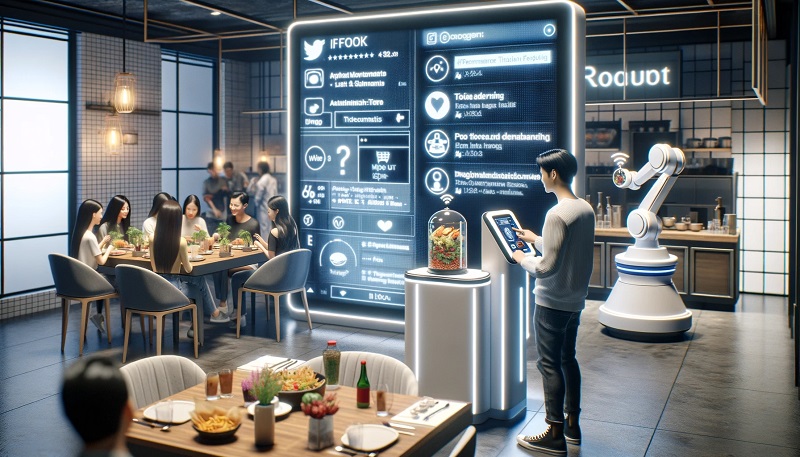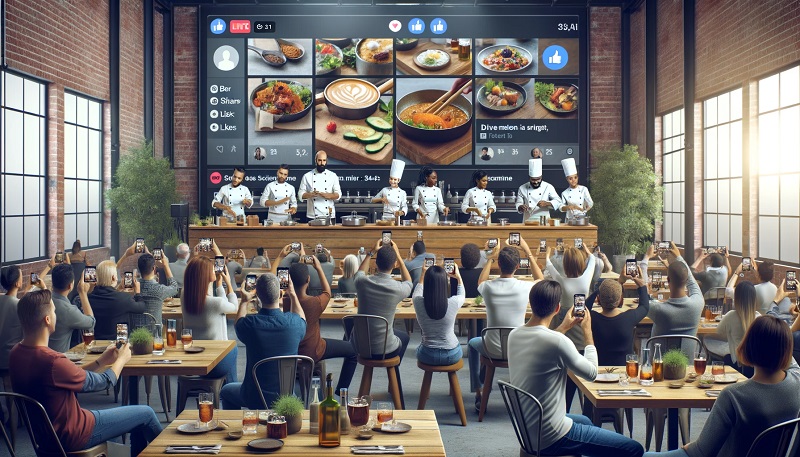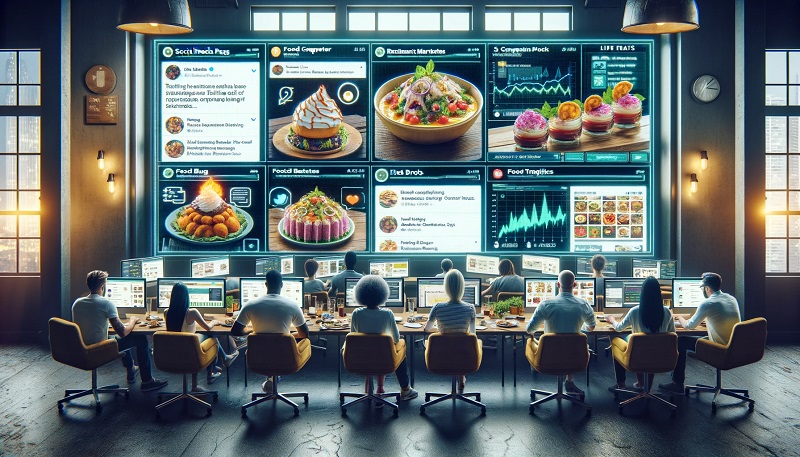🔥 Popular Free Downloads

THE FULL WORKS
All of our staff training manuals in one handy download!

FREE STAFF HANDBOOK
A totally customisable free staff handbook download.

FREE PROFIT & LOSS CALCULATOR
Keep on top of your expenses with our free profit and loss calculator.
⭐ Popular Resources

SWOT ANALYSIS
SWOT Analysis explained in detail accompanied by a free download.

DOWNLOADS HUB
The place to download all of our free forms, templates & guides.

FREE CASH FLOW CALCULATOR
Download our free template or use our online cash flow calculator.

BAR MANAGEMENT TRAINING
Simple and free online bar and cellar management training.
🔥 Popular Pages
- How to Run a Restaurant
- Awesome Articles
- Managing Your Staff
- Marketing Your Restaurant
- Restaurant Financing and Funding
- Maintaining Neutrality in Pronoun Usage
- Everything You Wanted To Know About Gin
- Safe Cooking Temperatures For Meat

Restaurant Marketing
Written by The Restaurant Doctor UK Team
Last Updated: 3rd November 2023
Welcome to the Restaurant Doctor UK guide to marketing. In the bustling gastronomic world, the battle to win hearts, or rather, stomachs, is intense.
With the rise of an array of cuisines, unique dining concepts, and ever-evolving consumer tastes, navigating your restaurant to the pinnacle of success can seem like a complex recipe.
Yet, with the right mix of marketing strategies, your eatery can dish out flavours that not only satiate hunger but also fuel success.
This guide aims to provide you with straightforward, relevant information about restaurant marketing, cutting out the boring and confusing stuff, so you can develop your marketing strategy quickly and confidently.
What is Restaurant Marketing?
Marketing is the process of identifying your customers' wants and needs and providing products and services that meet their requirements. In the culinary context, this relates to the food, beverages, and the overall dining experience you offer. For instance, your customers need to eat, but they may crave specific food - and that's where your restaurant comes in. Your offerings need to reflect your brand ethos, pique interest, and satisfy customer demands.
Marketing encompasses activities that promote your products or services, connect with your target audience, and ultimately, boost sales. It is not something to be afraid of; it is a worthwhile activity that you should definitely invest time in.
The Marketing Mix
Mastering the "4P's" of marketing—Product, Price, Place, and Promotion—can help concoct a successful marketing strategy. Let's dive into each element:
Product
Product encompasses what you sell, and it's important to note that it's not just about the items on your menu. Factors like disabled access, the exterior and interior of your restaurant, the quality of your wine list, and staff training all play a significant role in the product you offer.
The product is not only what the customer buys from you; it also includes the experience they have and the benefits your product provides.
Consider what you can offer your customers beyond a meal to attract and retain them. Improving the product you offer increases the number of people who want to dine at your restaurant.
Price
Price is about how much you charge for your product. Pricing strategy is a delicate balance between setting a price that customers are willing to pay and ensuring profitability. It should align with the restaurant's value proposition and the target market.
Always consider your customer's perception of the price you charge for your products. If they see it as a waste of money, they won't come to your restaurant. However, if they perceive your product as value for money, you are much more likely to attract customers.
For example, if you currently charge £15.00 for two courses and attract 20 customers a night, you will make £300 a night, or £2,100 a week in turnover. If you drop your price to £12.50 and now attract 30 people a night, you will make £375 a night, or £2,625 a week in turnover.
Place
Place pertains to your restaurant's location and how your target market will receive your product. You want to be where your customers frequent and ensure they can reach you easily.
If it's inconvenient for customers to travel to your restaurant, they likely won't come, so you have to take action to make it worth their while. This can be achieved by providing transport, offering a delivery service, or improving the product or price to give customers an incentive to make the effort to travel.
Promotion
Promotion means how information about your product (and restaurant) is communicated to your target audience. It includes all activities you control regarding your promotion, such as sales promotions, advertising, and public relations, as well as uncontrolled methods like personal recommendations and word of mouth.
Your marketing strategy isn't complete without a digital element. Your restaurant must be easily discoverable online, offer a streamlined user experience, and engage with consumers on various digital platforms to be successful.

Why Is Marketing Important For Your Restaurant?
The benefits of marketing your restaurant include defining your target audience, understanding why they choose your restaurant, and effectively targeting your advertising for optimal results.
The UK restaurant sector is an enthralling battlefield with over 86,630 restaurants in 2020. Standing out in this bustling crowd requires more than just an enticing menu; it calls for a compelling narrative, an engaging brand persona, and a vigorous online presence.
How To Market Your Restaurant
A delicious blend of branding, social media engagement, website design, paid media strategies, and effective advertising campaigns can form a robust marketing plan for your restaurant.
Develop a Strong Brand
Your restaurant's brand is much more than just a logo or a catchy name; it's the soul of your establishment. It encapsulates the ambiance, service, menu, and even the narrative you convey to your customers. So, a distinct brand identity can truly set your restaurant apart from its competition.
A strong brand identity should be closely tied to your offerings and reflect your restaurant's values, mission, and vision. Remember to convey your brand story consistently across all customer touchpoints – from interior design and staff uniforms to your social media presence and marketing materials.
Consistency will help in building a strong brand image that will resonate with your customers and establish loyalty.
Leverage Social Media
In today's digital age, platforms like Instagram, Facebook, and even Twitter are invaluable tools for marketing your restaurant. Use high-quality visuals to showcase your mouth-watering food and create posts that reflect your brand's personality and ambiance.
Engage with your followers through comments, direct messages, and even user-generated content. Respond promptly to both positive and negative reviews, demonstrating your commitment to customer satisfaction. Don't forget to make your content shareable, so it can reach a larger audience.
Regularly hosting contests or giveaways can also be a great way to increase engagement and broaden your reach.
Invest in a User-friendly Website
Your website is effectively your restaurant's digital storefront and a crucial touchpoint in the customer journey. Ensure that it's a reflection of your brand's personality and provides all necessary information, such as your menu, opening hours, location, and contact details, in a clean, accessible, and mobile-friendly format. Don't forget to incorporate online booking capabilities and a clear call-to-action on every page.
Consider adding a blog section or a news page where you can share updates, special offers, or behind-the-scenes peeks into your restaurant's operations. Remember, a well-optimised website also boosts your SEO ranking, making it easier for potential customers to find you online.
Consider Paid Media Strategies
Paid advertisements, when used strategically, can significantly increase your restaurant's visibility online and supplement your organic reach. This could include Pay-Per-Click (PPC) advertising, social media ads, or even promoted posts.
You can target these ads to reach specific demographics based on their location, age, interests, or dining habits. This enables you to reach potential customers who are most likely to be interested in your restaurant, increasing your return on investment.
Effective Advertising Campaigns
Crafting compelling campaigns that resonate with your target audience is crucial for driving traffic to your restaurant. Leverage local or global events, seasonal celebrations, or your brand's unique personality to generate buzz. This could include holiday specials, anniversary celebrations, or unique theme nights.
Your campaigns should convey a compelling message that is in line with your brand identity. Use storytelling techniques to make your campaigns more engaging. Also, remember to align your campaigns across all platforms - both online and offline - for a unified brand experience.

Restaurant Marketing Ideas And Trends
The world of restaurant marketing is rapidly changing and evolving, with new trends and ideas emerging all the time. Staying current and adapting your strategy to these trends can make a significant difference in your restaurant's success.
Food Delivery Apps
In today's fast-paced, convenience-driven world, food delivery apps like Uber Eats, Deliveroo, or Just Eat have truly revolutionised the dining experience. They provide a platform for restaurants to reach a larger audience and cater to customers who prefer to enjoy their favourite meals from the comfort of their homes.
Partnering with such platforms can significantly increase your restaurant's reach and visibility. Moreover, it opens up opportunities for special promotions, discounts, or meal combos exclusive to the app, providing additional incentives for customers to order from your restaurant.
Sustainability
As consumers become more environmentally conscious, sustainability has taken centre stage in the restaurant industry. More and more diners are attracted to eco-friendly restaurants that demonstrate a commitment to reducing their carbon footprint.
This could be achieved through various measures such as sourcing locally grown, organic ingredients, minimising food waste, using biodegradable packaging, or even running on renewable energy. Sharing these efforts on your marketing platforms can enhance your restaurant's image and appeal to the growing segment of green consumers.
User-Generated Content
Encouraging patrons to share their dining experiences on social media can be a powerful marketing tool. User-generated content (UGC), such as photos of meals or selfies in your restaurant, not only provides authentic and relatable content for your channels, but also helps build a sense of community around your brand.
It also functions as a personal recommendation from customers to their followers. Consider hosting photo contests or providing incentives like discounts or freebies for customers who tag your restaurant or use a specific hashtag in their posts. This strategy can significantly boost your online engagement and presence.
Virtual and Augmented Reality
Emerging technology trends such as virtual and augmented reality (VR/AR) are starting to permeate the restaurant industry. Some restaurants have begun to incorporate VR/AR in their marketing efforts to offer immersive dining experiences. For instance, augmented reality can be used to enhance your restaurant's menu, where customers can see a 3D representation of a dish before ordering.
Similarly, virtual reality can be used for virtual tours of your restaurant, creating interactive and engaging content for your digital platforms.
Personalisation and Data-Driven Marketing
With the abundance of data available from various touchpoints, personalisation has become a key trend in restaurant marketing. Using customer data can help tailor the dining experience to individual tastes, leading to increased customer satisfaction and loyalty.
This can range from personalised menu recommendations based on previous orders to targeted marketing campaigns. Additionally, data-driven decisions can optimise your marketing efforts, ensuring you reach the right audience at the right time.
Remember, the best marketing strategies are those that align with your restaurant's brand identity and resonate with your target audience. It's important to keep an eye on these evolving trends, but it's equally important to understand your customers and what appeals most to them.

Successful Restaurant Marketing Campaigns
A successful marketing campaign can significantly elevate a restaurant's visibility and popularity, turning curious onlookers into regular patrons. The secret sauce lies in finding innovative, engaging, and often unexpected ways to connect with the audience, whether it's through humour, tapping into current events, or aligning with customer values.
In this section, we'll delve into three remarkable examples of marketing campaigns that achieved just this.
1. Nando's 'David vs David' Campaign
During the 2019 UK General Elections, Nando's launched a clever marketing campaign called 'David vs David', capitalising on the two primary candidates, David Cameron and Ed Miliband, both named David.
Nando's is well known for its witty and topical advertising, and this campaign was no different. In this case, Nando's humorously related the political battle to the choice between its two popular chicken dishes, 'Extra Hot' and 'Lemon & Herb'. The campaign garnered substantial attention due to its timeliness, humour, and relevance, demonstrating the potential power of aligning marketing campaigns with current events.
It created a buzz on social media, drove conversations around the brand, and reinforced Nando's as a company in touch with its customers and their world.
2. Greggs' Vegan Sausage Roll Launch
In 2019, the UK bakery chain Greggs introduced a vegan sausage roll to its menu. To promote this new product, they executed a brilliant social media campaign that played off the hype surrounding high-profile tech launches.
The vegan sausage roll was presented in a similar fashion to a new iPhone, inside a luxurious "Greggs" branded box, which was then shared on social media. The launch led to massive online discussions and debates, both among fans and critics, resulting in widespread media coverage. This controversy worked in Greggs' Favor, leading to increased brand visibility and a reported 9.6% rise in sales in the first half of 2019.
This campaign serves as a great example of how creative and playful storytelling can captivate public attention and drive product sales.
3. Wagamama's 'Bowl to Soul' Campaign
In 2020, Wagamama, a British restaurant chain offering Asian food, launched a multi-channel campaign called 'Bowl to Soul'. The campaign aimed to promote Wagamama's philosophy of 'kaisen', a Japanese word meaning 'good change'.
This philosophy was woven into the stories of individual transformation and self-improvement, linking them to Wagamama's food. The campaign consisted of videos, digital, outdoor, and cinema advertising and even included a 'Bowl to Soul' podcast.
The multi-channel approach ensured the message reached a diverse audience across different platforms, strengthening Wagamama's brand identity and resonating with customers who identified with its values.
It highlighted how a restaurant can effectively use its brand values to connect with its customers on a deeper level, beyond just the food it serves.
Each of these campaigns leveraged different strategies but shared a common thread: they were all innovative, timely, and closely tied to their brand identities.
Creating A Restaurant Marketing Plan
Crafting an effective marketing plan requires a deep understanding of your goals, audience, and market landscape. Define your objectives, understand your audience, choose your channels, design and execute campaigns, and constantly monitor and adjust your performance to ensure success.

Monitoring Your Competition
It's essential to be constantly aware of what your competitors are doing to entice customers into their restaurants. Remember that your competitors are after the same customers you want! While competition might seem like a bad thing, it's actually good, as the threat of other businesses 'muscling in' on your territory or customer base keeps you on your toes and makes you constantly improve your product and service.
What should you know about your competition?
✔ Where are they located?
✔ How much do they charge for their products/services?
✔ What products do they offer?
✔ How do they treat their staff?
✔ How long have they been in business?
Knowing this information about your competitors enables you to become more competitive in the market. Instead of just slashing your prices, which can be detrimental to your business, consider competing by offering higher quality products, better service, or having better ethics than the competition. This approach creates a better deal for customers than your rivals can offer.
Don't assume that only restaurants with the same type of menu as yours are your competitors. There are many businesses out there vying for the same customers, such as:
⚠ Supermarkets
⚠ Takeaways
⚠ Pubs
⚠ Hotels
⚠ Indian, Chinese, Thai, Spanish, Italian restaurants, etc.
⚠ People hosting dinner parties at home
Remember to keep an eye on what everyone else is doing and gauge their success. By staying aware of your competition and understanding the various aspects of the marketing mix (Product, Price, Place, and Promotion), you can better tailor your marketing strategy to attract and retain customers. This ultimately leads to a more successful and profitable restaurant business.
Final thoughts
While the world of restaurant marketing may seem daunting, having a solid understanding of the marketing mix, keeping an eye on the latest trends, and executing well-planned campaigns can help your restaurant stand out. Yet, it's essential to remember that your love for food and commitment to providing a delightful dining experience is the secret sauce that will keep customers coming back.
Key Takeaways
The Restaurant Doctor UK guide to restaurant marketing aims to provide you with the essential information you need to create a successful marketing strategy for your restaurant. By considering the marketing mix (Product, Price, Place, and Promotion), leveraging social media, investing in a user-friendly website, and executing effective advertising campaigns, you'll be better equipped to effectively target and attract customers to your restaurant, ensuring its continued growth and success.
More Restaurant Marketing Articles 👇
About | Contact | Terms of Use | Site Map | Cookie Policy
© 2007 - 2023 Restaurant Doctor UK. All rights reserved.